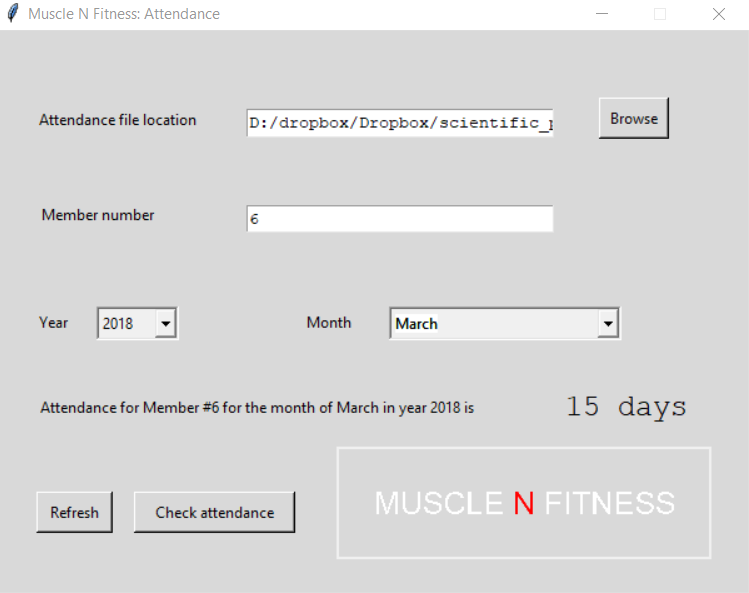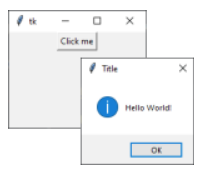
- #TKINTER POPUP WINDOW WITH ENTRY HOW TO#
- #TKINTER POPUP WINDOW WITH ENTRY MANUAL#
- #TKINTER POPUP WINDOW WITH ENTRY CODE#
- #TKINTER POPUP WINDOW WITH ENTRY WINDOWS#
Next, we have the withdraw() method which removes the window from. Let us create a Python script to close the underlying or the main window after displaying the popup. For a particular application, we can trigger the popup on a button object. # Arrange for the menu to pop up when the label is clickedīind. First, we are importing the Tkinter module, then we are creating a window in the ROOT object. Popup in a tkinter application can be created by creating an instance of Toplevel (root) window. $m add command -label "Example 2" -command bell $m add command -label "Example 1" -command bell
#TKINTER POPUP WINDOW WITH ENTRY HOW TO#
How to attach a simple popup menu to a widget. The menu will be positioned so that the entry is positioned over Otherwise entry gives the index of an entry in menu and Menu's upper left corner is positioned at the given point. If entry is omitted or an empty string, the Menu is the name of a menu widget and x and yĪre the root coordinates at which to display the menu. Traversed with the mouse or the keyboard.

This procedure posts a menu at a given position on the screen andĬonfigures Tk so that the menu and its cascaded children can be
#TKINTER POPUP WINDOW WITH ENTRY MANUAL#
Toolbar = NavigationToolbar2TkAgg(canvas, self)Ĭanvas._tkcanvas.pack(side=tk.TOP, fill=tk.BOTH, expand=True)Īni = animation.Tk_popup manual page - Tk Built-In Commands Tcl8.6.11/Tk8.6.11 Documentation > Tk Commands > popup Tcl/Tk Applications | Tcl Commands | Tk Commands | Package Commands | SQLite3 Package Commands | TDBC Package Commands | tdbc::mysql Package Commands | tdbc::odbc Package Commands | tdbc::postgres Package Commands | tdbc::sqlite3 Package Commands | Thread Package Commands | Tcl C API | Tk C API | Package C API | TDBC Package C API NAME Label = tk.Label(self, text="Graph Page!", font=LARGE_FONT)Ĭanvas.get_tk_widget().pack(side=tk.BOTTOM, fill=tk.BOTH, expand=True) Tkinters wrapper to the underlying wm attributes command doesnt.
#TKINTER POPUP WINDOW WITH ENTRY WINDOWS#
Label = tk.Label(self, text="Page One!!!", font=LARGE_FONT)īutton1 = ttk.Button(self, text="Back to Home",Ĭommand=lambda: controller.show_frame(StartPage)) Windows and Dialogs: Part of a Modern Tk Tutorial for Python, Tcl, Ruby, and Perl. There is no promiseĬommand=lambda: controller.show_frame(BTCe_Page))īutton2 = ttk.Button(self, text="Disagree", Label = tk.Label(self, text=("""ALPHA Bitcoin trading application Answers related to tkinter popup window with entry how to create an entry box on tkinter python keep tkinter window below others pop tkinter to the front. Menubar.add_cascade(label="File", menu=filemenu)įid(row=0, column=0, sticky="nsew") Tk.Tk.wm_title(self, "Sea of BTC client")Ĭontainer.pack(side="top", fill="both", expand = True)Ĭid_columnconfigure(0, weight=1)įilemenu.add_command(label="Save settings", command = lambda: popupmsg("Not supported just yet!"))įilemenu.add_command(label="Exit", command=quit) Tk.Tk.iconbitmap(self, default="clienticon.ico") Let us try to create an information message box with an. Title = "BTC-e BTCUSD Prices\nLast Price: "+str(data) We use this messagebox function when we want to show some related or relevant information to the user. The dialog will have a title, a message, and two buttons (yes and no). SellDates = (sells).tolist()Ī.plot_date(buyDates, buys, "#00A3E0", label="buys")Ī.plot_date(sellDates, sells, "#183A54", label="sells")Ī.legend(bbox_to_anchor=(0, 1.02, 1. To show a dialog that asks for user confirmation, you use the askyesno() function. Sells = np.array(sells).astype("datetime64")
#TKINTER POPUP WINDOW WITH ENTRY CODE#
# The code for changing pages was derived from: įrom _tkagg import FigureCanvasTkAgg, NavigationToolbar2TkAggīuys = np.array(buys).astype("datetime64") The result now if you go to File and choose save settings: That's it, now when we want to have a popup message, say with a button, we would just have something like: command = lambda: popupmsg("popup message here!")) From there, we create a simple "okay" button, which will destroy the window. Here, we're defining a new tk.Tk instance, giving it a new title ("!"), and then preparing our text label with the msg parameter from the function. Label.pack(side="top", fill="x", pady=10)ī1 = ttk.Button(popup, text="Okay", command = stroy) Label = ttk.Label(popup, text=msg, font=NORM_FONT) Now that we have that, we're going to create our popup function: To start, we're going to need a couple new fonts, since "large_font" is a bit big. The goal is to create something that we can use in a variety of circumstances, so we want a popup window function, along with a text parameter where we can specify the text we want to show.


This is used for things like informational messages, warnings, disclaimers, new product versions, and a whole lot more. Text at the top of the window is very easy to miss, so most people choose to do a pop-up message. There are many ways this can be done, with some text at the top of the window, or with something like a pop up message.

Many times, it is generally useful to have a quick and easy way to communicate with your user.


 0 kommentar(er)
0 kommentar(er)
